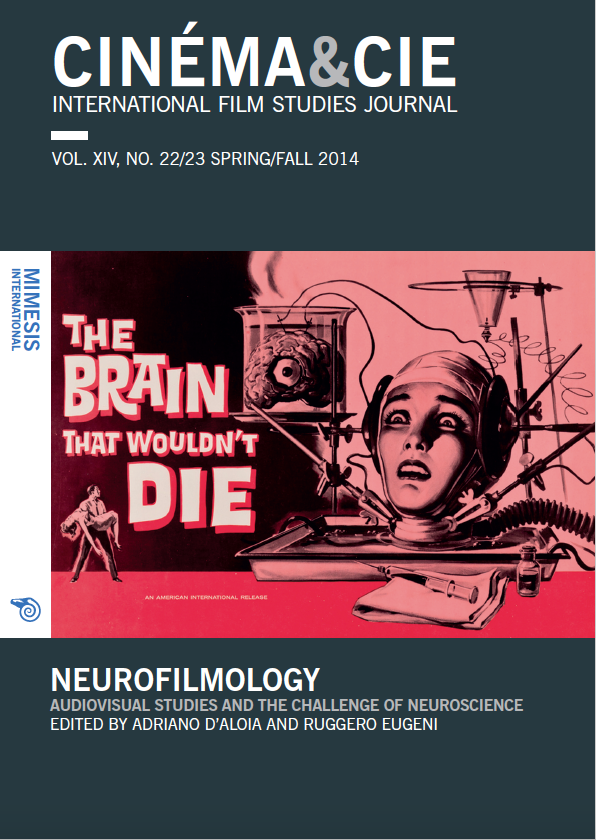The Sensory-Motor Grounding of Abstract Concepts in Two Films by Stanley Kubrick
Abstract
This article provides an embodied account of conceptual meaning in film. More specifically, it claims that the sensory-motor system plays a constitutive role in the cinematic characterisation of abstract concepts. Firstly, we briefly discuss the standard disembodied view of first-generation cognitive science according to which the mental representations of concepts are primarily symbolic and abstract. Secondly, we argue against this view by discussing an embodied theory of concepts based on recent neuroscientific evidence and results from cognitive linguistics. Lastly, we consider the implications of the latter for the study of visual representations of abstract conceptual meaning in film. Using Stanley Kubrick’s 2001: A Space Odyssey (1968) and Eyes Wide Shut (1999) as examples, we make the case that sensory-motor structures play a crucial role in the representation of abstract concepts in cinema.






